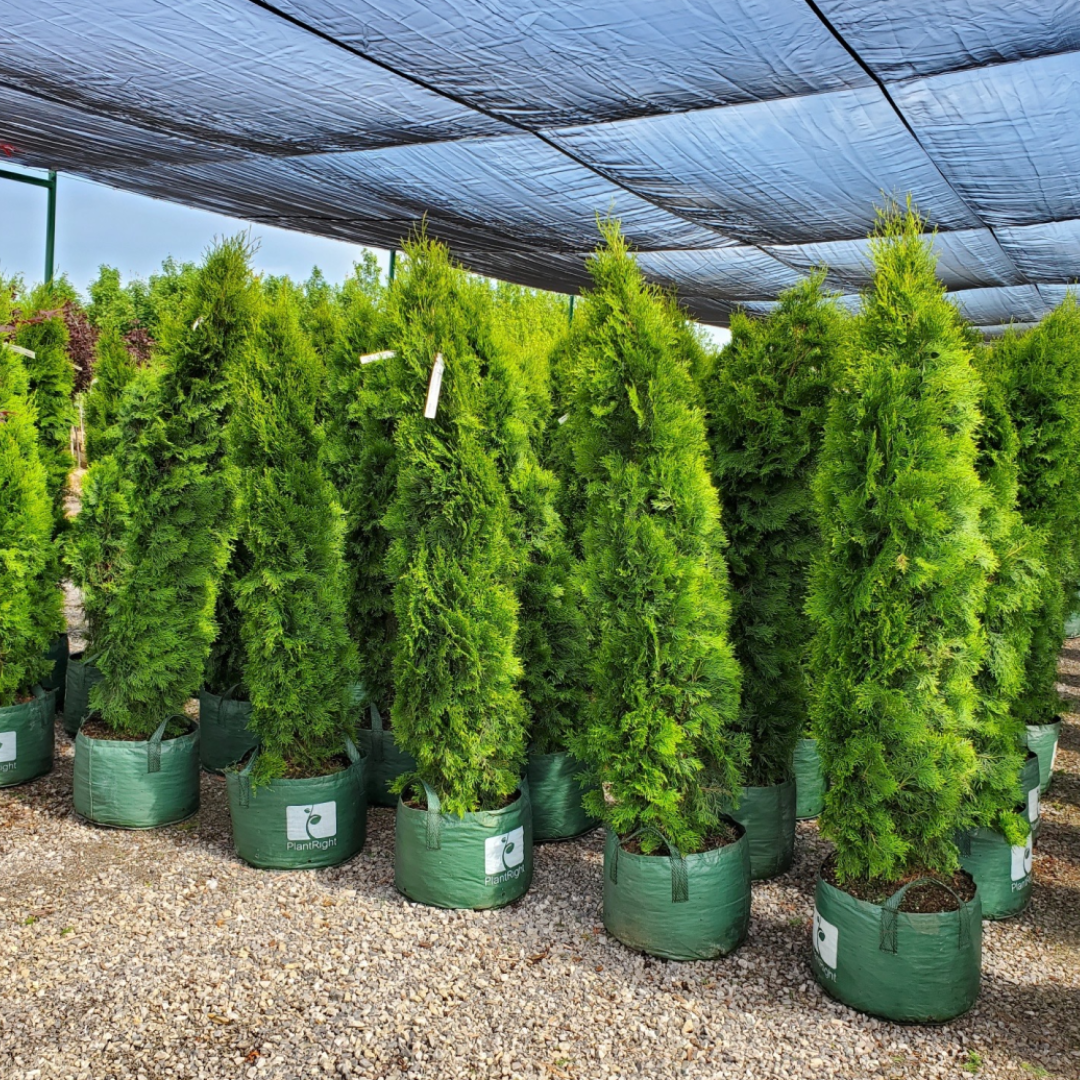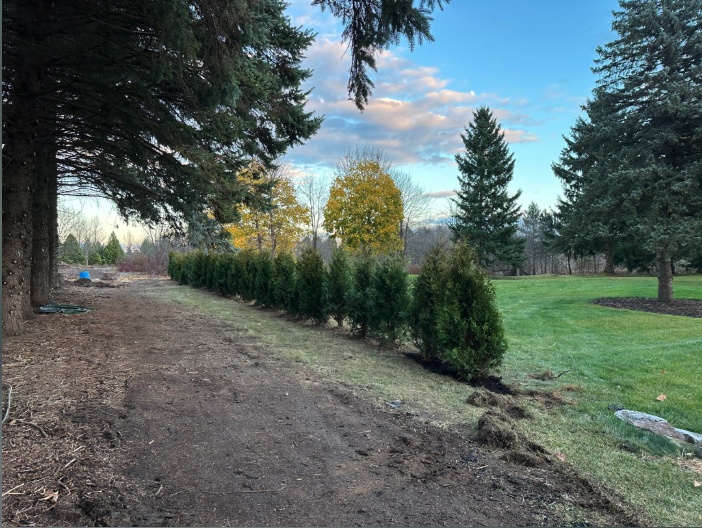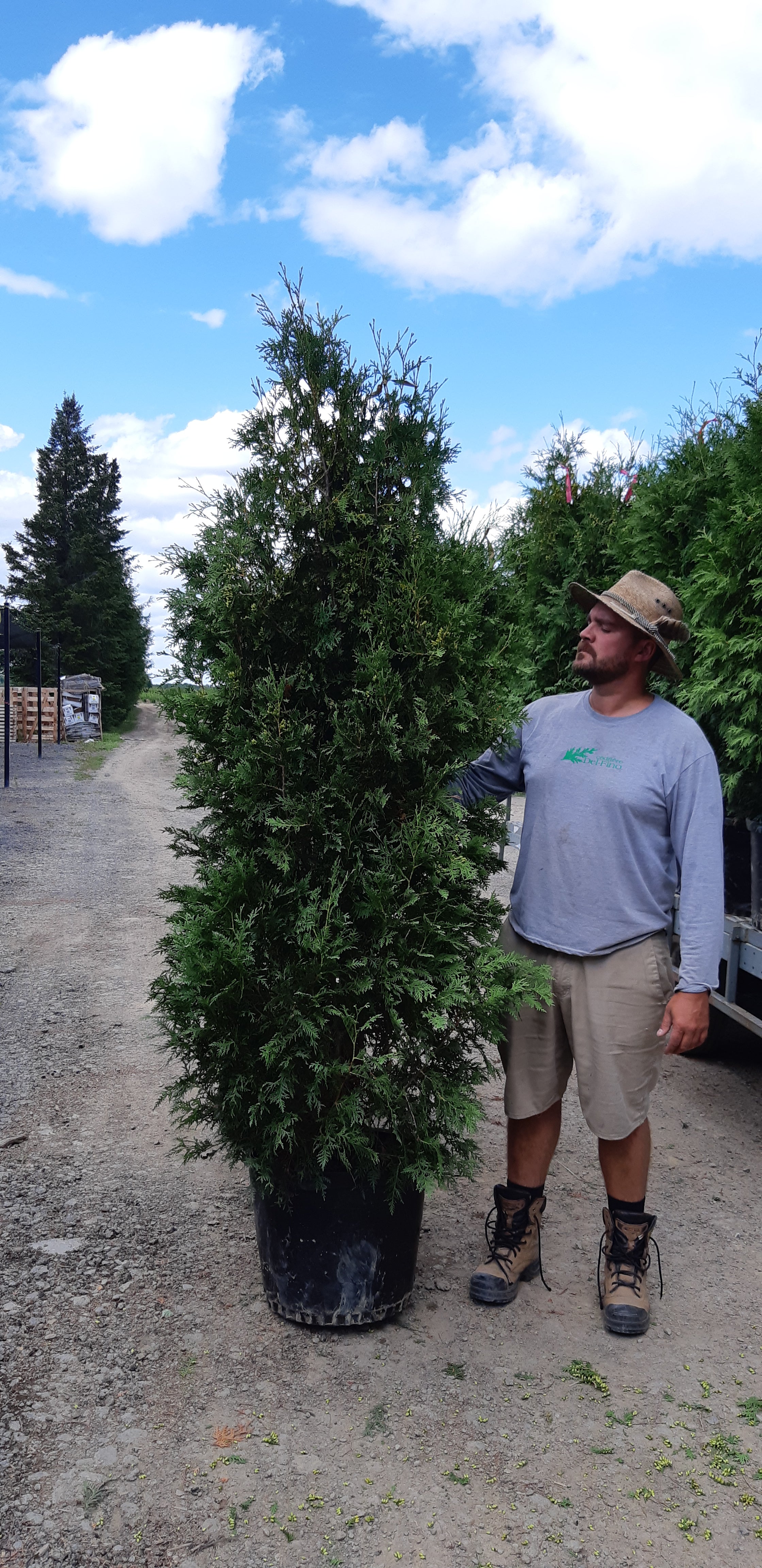Emerald cedars (Thuja occidentalis 'Smaragd') are a popular choice for homeowners in Ontario, prized for their lush green foliage and versatility in landscaping. To maximize their beauty and functionality, proper pruning is essential. Whether you want to shape them into a formal hedge, maintain their health, or simply control their size, this comprehensive guide will provide you with all the information you need to prune emerald cedars effectively in Ontario's unique climate.
Understanding Pruning Goals:
Before you start pruning your emerald cedars, it's crucial to understand your specific goals. Different pruning techniques can achieve various results, such as:
-
Hedge Formation: Creating a formal hedge requires regular pruning to maintain a uniform shape and size.
-
Size Control: Keeping your cedars at a desired height or width to fit your landscape.
-
Health Maintenance: Removing dead or diseased branches to ensure the overall health of the trees.
-
Aesthetic Appeal: Enhancing the natural shape and beauty of the emerald cedars.
Let's delve into the detailed steps for achieving these goals through proper pruning:
Tools and Safety Precautions:
Before you begin pruning your emerald cedars, make sure you have the right tools on hand:
-
Pruning Shears or Hedge Trimmers: These are essential for precise cutting.
-
Loppers: For thicker branches that pruning shears can't handle.
-
Pruning Saw: Useful for large branches or overgrown sections.
-
Gloves and Safety Glasses: Protect your hands and eyes during the process.
-
Ladder or Step Stool: If your cedars are tall, ensure you can reach the higher branches safely.
When to Prune Emerald Cedars:
Timing is crucial when it comes to pruning emerald cedars in Ontario. The best times to prune are:
-
Early Spring: Just before the new growth begins, typically in March or early April. This is an ideal time for major shaping and size control.
-
Late Spring: After the initial spring growth but before the heat of summer, around May or early June. Suitable for maintenance pruning.
-
Early Fall: For minor touch-ups and shaping, aim for September.
Avoid pruning during extreme cold in winter or during the hot, dry summer months, as these times can stress the trees.
Pruning Techniques for Different Goals:
-
Hedge Formation:
To create a formal hedge with emerald cedars, follow these steps:
-
Start by pruning the tops of your cedars when they reach the desired height. This encourages lateral growth and ensures a thick, dense hedge.
-
Use a string or guide to maintain a straight line while trimming the sides. Trim the sides at a slight taper, with the top being narrower than the base to allow sunlight to reach the lower branches.
-
Regularly maintain this shape by trimming the top and sides as needed, typically once or twice a year.
-
-
Size Control:
To control the size of your emerald cedars, follow these tips:
-
Trim the branches that extend beyond the desired size, making clean cuts just above a lateral branch or bud.
-
For vertical growth control, prune the main leader (central stem) to the desired height.
-
Keep in mind that emerald cedars are forgiving and can withstand significant pruning.
-
-
Health Maintenance:
Pruning for health involves removing dead, diseased, or damaged branches. Inspect your cedars regularly and promptly remove any problem branches to prevent the spread of disease or infestations.
-
Aesthetic Appeal:
To enhance the natural beauty of your emerald cedars, follow these tips:
-
Trim with a light touch, removing only the branches that disrupt the desired shape or symmetry.
-
Step back frequently to assess your progress and ensure you're achieving the desired aesthetic.
-
Additional Tips:
-
Always make clean cuts to prevent damage and encourage healthy regrowth.
-
Disinfect your pruning tools with rubbing alcohol or a bleach solution before and after use to prevent the spread of diseases.
-
Avoid pruning more than one-third of the tree's total growth at a single time to avoid stress.
-
Water your emerald cedars adequately after pruning, especially in hot weather, to help them recover.
Conclusion:
Pruning emerald cedars in Ontario can be a rewarding and enjoyable task when done correctly. By understanding your pruning goals, using the right tools, and following proper techniques, you can maintain healthy, vibrant, and beautifully shaped emerald cedars in your landscape. Whether you're aiming for a formal hedge, size control, health maintenance, or aesthetic enhancement, the key to successful pruning lies in timing and precision. Invest the time and effort into caring for your emerald cedars, and they will continue to grace your outdoor space with their lush greenery and natural beauty for years to come.


